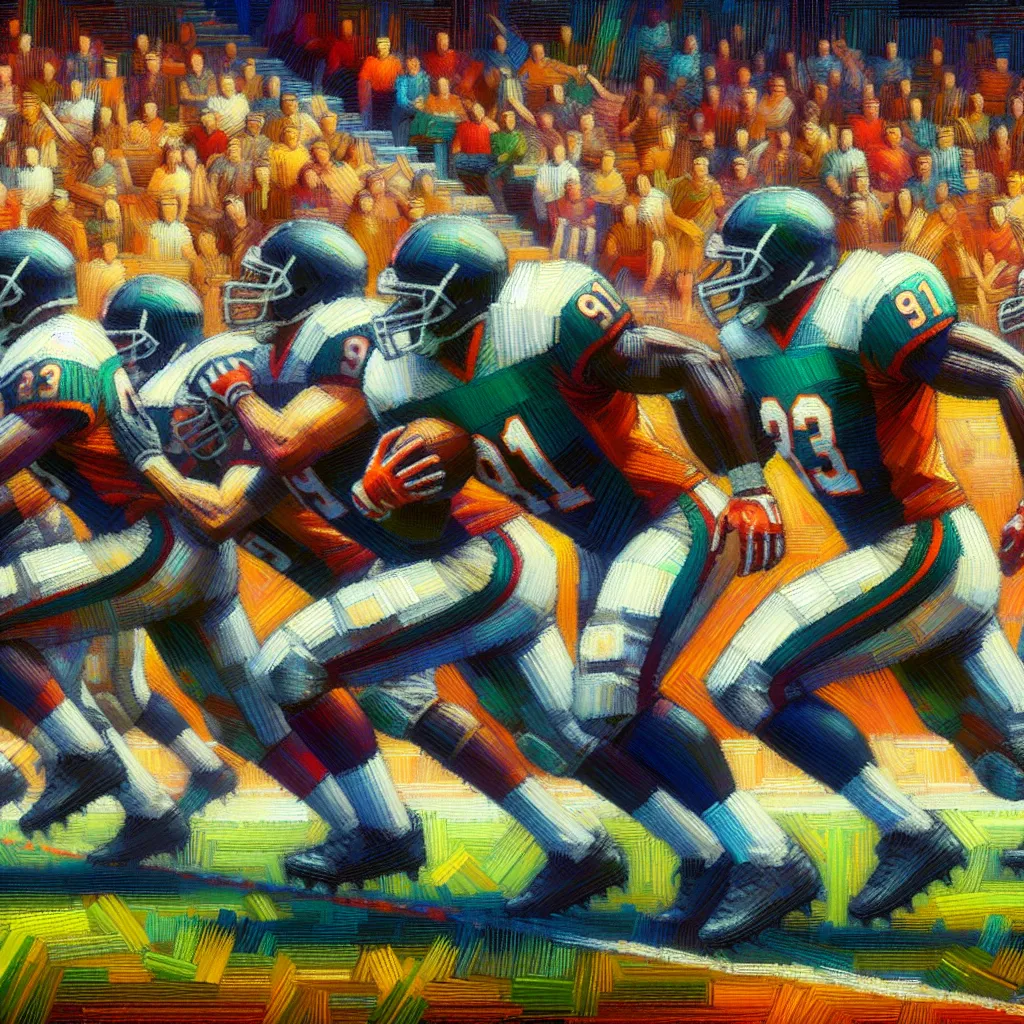
- Published on
- Authors

- Name
- Sports Tips
Run Blocking: Creating Lanes on the Left Side
Run blocking is an essential component of a dominant football Teams playbook. When it comes to creating lanes on the left side, employing effective strategies such as drive blocks, combo blocks, and using leverage can significantly move defenders and establish a robust rushing attack. Let's break down each technique and how it contributes to creating unmissable opportunities for your running game.
Drive Blocks
What Are Drive Blocks?
Drive blocks are fundamental in run blocking, involving an offensive lineman pushing the defender directly backwards, typically at the point of attack. This technique relies on strength, leverage, and proper footwork.
How to Execute a Drive Block
- Stance and Start: Begin with a powerful, low stance. As the ball is snapped, explode out, maintaining low pad level.
- Contact Point: Aim to strike the defender's chest with the heels of your hands. Keep elbows tight and drive with your legs.
- Footwork: The first step should be a quick, short power step, followed by a second step that gains ground and reinforces the block.
- Finish: Continue driving your legs and maintain hand positioning to push the defender out of the desired running lane.
Combo Blocks
What Are Combo Blocks?
Combo blocks involve two offensive linemen initially double-teaming a defensive lineman before one of them peels off to block a linebacker at the second level.
How to Execute a Combo Block
- Initial Engagement: Both linemen must simultaneously strike the defensive lineman with force, targeting leverage points like the hip and shoulder.
- Communication: Clear, concise communication between the blockers is crucial. Decide in advance which blocker will climb to the second level.
- Transition: After securing the double team, the designated lineman transitions to the linebacker. The remaining blocker must stay engaged with the defensive lineman to prevent penetration.
- Finish: Each lineman must maintain aggressive blocking through the whistle, ensuring the defensive lineman and linebacker are neutralized.
Leveraging for Success
The Importance of Leverage
Leverage in blocking refers to the technique of using body positioning and angles to magnify physical strength and control over the defender.
Leveraging Techniques
- Low Pad Level: Keeping your pads lower than the defender’s pads can generate better leverage and more effective power transfer.
- Anchor Points: Use your hands to establish points of control, typically at the defender’s chest or shoulder pads.
- Angled Blocks: Approach blocks at an angle to create better positioning and leverage, as opposed to head-on blocks which can be easier for defenders to counter.
Practical Table for Leveraging Techniques
| Technique | Key Focus | Benefits |
|---|---|---|
| Low Pad Level | Body Positioning | Increased power and control |
| Anchor Points | Hand Placement | Control of defender's movement |
| Angled Blocks | Approach Angles | Enhanced leverage and effectiveness |
Final Thoughts
Effective run blocking, particularly on the left side, hinges on mastering drive blocks, combo blocks, and using leverage to your advantage. By focusing on these strategies, offensive lines can create substantial, versatile rushing lanes that keep defenses on their heels. For both players and coaches, continual refinement of these techniques is essential for on-field success.
Stay tuned for more advanced football insights and strategies to elevate your game to the next level!
Happy blocking!
-Coach Strategy
